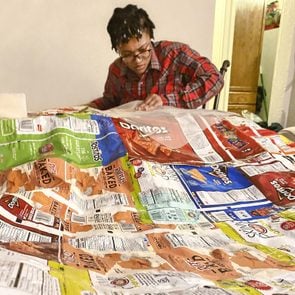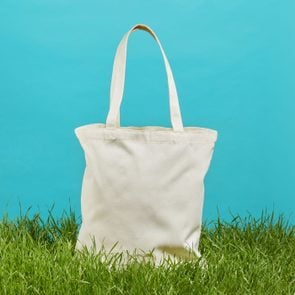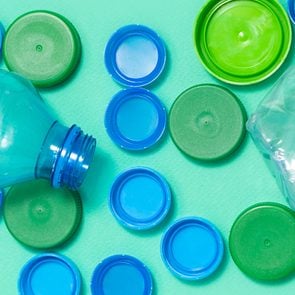“Trash Walker” Anna Sacks Finds Treasure in New York City’s Garbage
Updated: Jun. 04, 2024
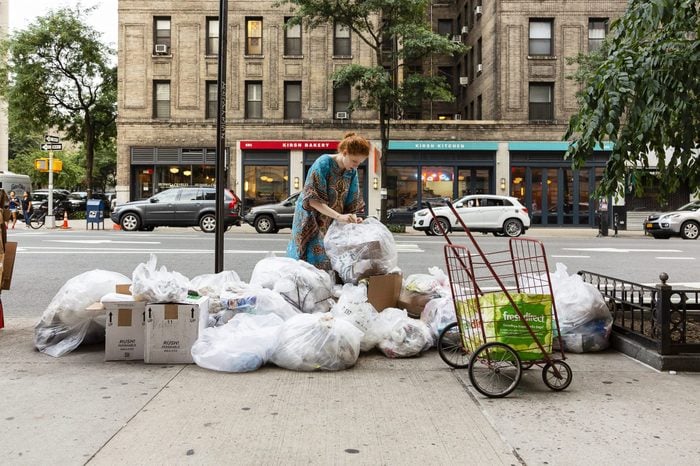
New York City's trash is this woman's treasure, and she's using her platform to fight our culture of excess waste
Working at an investment bank in New York City in the mid-2010s, Anna Sacks was living the life—just not the life she wanted. Sure, she was happy. But she wanted to do something that felt important and was fulfilling on a deeper level.
Some people seeking meaning might read a self-help book, try a little recycling or upcycling, or perhaps volunteer a few hours a week. Sacks packed up her life and moved to Connecticut for three months to participate in Adamah, a Jewish farming program focusing on sustainable living and growing sustainable food. When she returned to New York, it was with a new purpose and various new skills to make her dreams a reality.
“One of the things that really stuck with me from Adamah, which means ‘Earth’ in Hebrew, was how little waste they produced and how they handled the waste they did have, primarily through composting,” she says. “And I just thought, ‘Why aren’t we doing that here?’ I’d walk around my neighborhood and was shocked at how many bags of waste were piled up. I began to wonder, ‘What is actually in all those bags and recycling bins on the curbs?'”
Instead of getting stuck in a never-ending cycle of climate anxiety, she embarked on a mission that would make her one of the most influential climate-change activists on social media today.
Get Reader’s Digest’s Read Up newsletter for more real stories, fun facts, humor, cleaning, travel and tech all week long.
About the expert
|
Trolling the trash
The Adamah program opened Sacks’s eyes to the damage consumer culture is doing on a local, national and global level and the need to find solutions. So, in 2016, she took a master composting course and started working with a food-rescue program. She found her calling in 2017. To quench her curiosity and help her get food and household supplies, she began “trash walking.”
During jaunts around her neighborhood, Sacks picks through garbage to look for reusable items. Soon, her trash walks expanded to include corporate dumpsters and residential trash. Surprisingly, she discovered a wide array of really great stuff—like clothing, designer accessories, dinnerware and food—and started documenting her finds on Instagram and TikTok.
Exposing a culture of consumerism
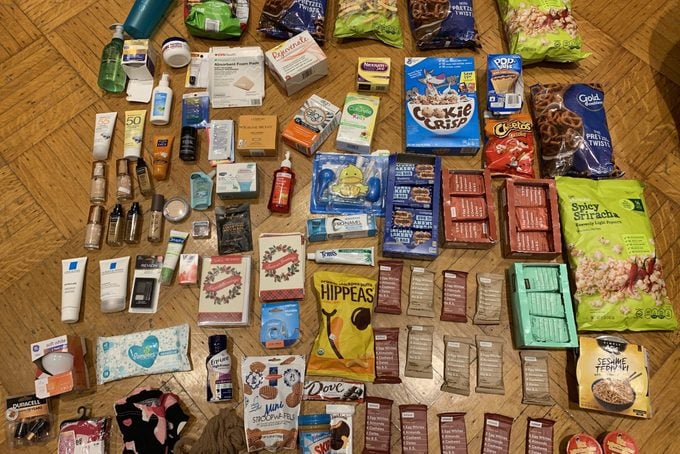
Under the name The Trash Walker, Sacks quickly gained popularity for her educational, funny and surprising videos that highlight the problems with consumerism and share information about how to live a more sustainable lifestyle. “The root issue is overproduction, which leads to overconsumption, which leads to an immense amount of waste,” she says.
Think, for a moment, about your overcrowded closet. Fast fashion makes it easy to buy the latest trends for cheap, but those clothes can end up in the trash, even if you sell or donate them. It’s a point Sacks made in a TikTok video exposing a mountain of thrift-store trash. In it, black trash bags filled with clothes crowd the sidewalk and hold the goods the store couldn’t sell.
“It was very upsetting to see, but also not surprising,” says Sacks, her image superimposed over fat bags overflowing with clothing. “We make too much clothing as a society. We need to produce less.”
Kicking goods to the curb
The lesson from Sacks’s trash walking isn’t just that we need to produce less stuff. It’s that we need to stop tossing perfectly good items in the trash too. Dive through any retail store’s garbage, and you’ll soon agree.
“I don’t usually gasp or get shocked, but this is shocking,” says Sacks in a 2021 TikTok video in which she unearths 16 unopened tissue boxes and two rolls of toilet paper from Duane Reade’s garbage pile. In another video, she salvages three bags of KitKats from the drugstore.
But waste is far from just a Duane Reade problem. She regularly finds bags of candy and unopened boxes of tampons outside other drugstores, flowers outside florists’ shops, and decorations outside party stores. (One Party City haul brought in about $3,000 worth of goods, most still in the packaging.) And in one thrift store’s trash, she found an unopened Pottery Barn Kids blanket retailing for $60 and a box of floral dinnerware.
There’s also plenty of food waste from New York City public schools. “I think the New York public school system can do a better job managing their inventory,” she says while rifling through hundreds of bags of mini carrots, “so that this doesn’t end up being wasted, as it currently is.”
Getting to the root of the problem
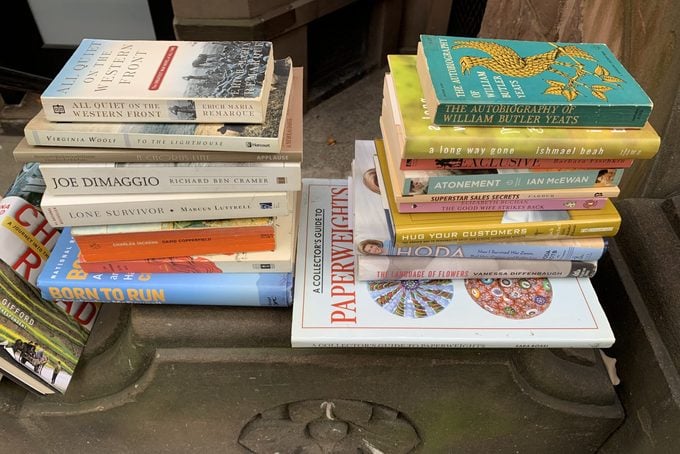
The fact is, corporations and other organizations (like public schools) often choose to destroy or throw out items rather than give them away to people who might need them. A big reason for this waste is the way our current tax laws are structured, Sacks says. Retailers who destroy merchandise can claim the cost as a loss on their taxes and be refunded any tariffs. If they give away goods, they can claim only a small amount as a charitable deduction on their taxes. This gives companies a financial incentive to be wasteful instead of giving away goods.
Employees’ hands are often tied when it comes to disposal protocol. “Employees are not allowed to take this home,” Sacks says while filming her discovery of the trashed tissue boxes from Duane Reade. “That would be considered theft, and they’d be fired for doing so. And the same thing for donating. Even if an employee wanted to donate it, they could be fired for theft for donating.”
Ideally, companies would donate the things they can’t sell to “free stores” or directly to the needy instead of tossing items in the trash. Sacks also calls for bipartisan “Donate, Don’t Dump” legislation to stop corporations from kicking items to the curb.
“Corporations need to do better about reducing their waste,” she says, “but voters also need to speak up and get these policies changed.”
Pushing for legislation
According to Sacks, the COVID-19 pandemic didn’t spur any significant changes in how companies handle waste—something that really surprised her. “Unfortunately, I think a lot of businesses are operating as usual and are in denial about the climate crisis and the fundamental changes they need to make,” Sacks says. “We’ve repeatedly seen that the idea of corporations self-regulating or voluntarily changing is a myth.”
This concern has led her to advocate for stronger legislation. One New York State bill she supports is the Fashion Act, which targets environmental and labor rights violations within the fashion industry’s supply chains. It combats environmental degradation by requiring companies to meet science-based targets for reducing carbon emissions, lessen the environmental impact of chemicals used in garment production and stop the pollution of waterways with toxic waste. “We need the government and laws to enforce consequences for violating basic human rights and environmental standards,” Sacks says.
Effecting change in other ways
Sacks’s videos have gone viral many times, causing shockwaves through the industries she calls out. Her most popular video of 2021 showed brand-new luxury Coach handbags that had been slashed by employees before being trashed—a way of “damaging out” unwanted inventory to take advantage of the tax loophole. (And perhaps as a way to keep the luxury brand exclusive.) This, despite the “sustainability commitment” on Coach’s website, which says the company encourages fixing damaged bags and is part of the “circular economy.”
The 56-second TikTok went live in October, and a week later, Coach announced changes to its policy, stating it would no longer destroy in-store returns. Sacks discovered that it would, however, “still destroy other unwanted inventory, like if they don’t like the stitching or color.”
In 2019, she called out CVS for throwing away a dumpster full of perfectly good medical supplies, including much-needed baby formula. She wrote the CEO, suggesting CVS form local donation partnerships. In response, the company said it would look into the matter. After another video of her CVS dumpster diving went viral, the company committed to switching away from plastic bags.
Holding companies accountable for their promises is another one of her goals. In 2016, Starbucks made big news when it announced that it would donate all unsold food, instead of throwing it out, by 2020. Sacks’s 2020 videos showed that despite the corporation’s promise, it was still throwing out tons of good food. In 2022, Starbucks recommitted, saying it would reduce total food loss and waste in its U.S. operations by 50% by 2030.
She’s also amplifying messages from other “trash-tivists” to get more results. In March 2021, she shared a video from Jonathan Card, who found a live parrot in a Petco dumpster. The social media outrage was so immediate and intense that the company was forced to open a formal investigation.
Going from trash to treasure
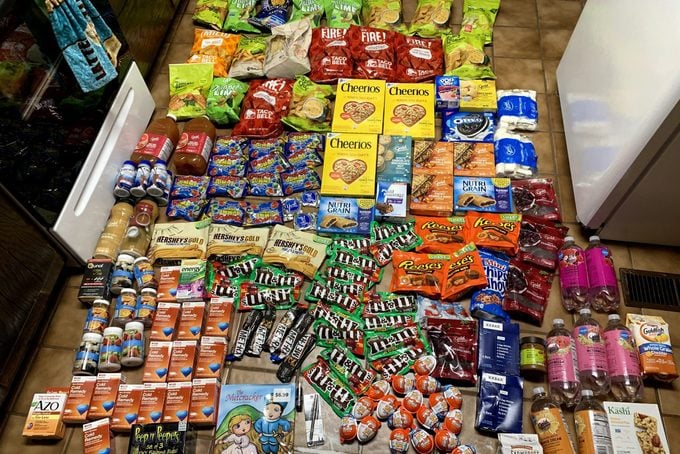
They say one man’s trash is another’s treasure, and that couldn’t be more true in Sacks’s case. Like an urban treasure hunter, she’s uncovered some gems hiding in New York City garbage bags.
- An antique Russel Wright Saturn punch bowl set. It is now part of the permanent collection at Cooper Hewitt, Smithsonian Design Museum.
- A ball of expensive Tiffany necklaces. She and a friend spent hours untangling them.
- A beautiful urn full of ashes from a pet cat. “It’s a good thing I read the plaque on the bottom, or I might have opened it,” she says.
- A green velvet opera jacket. She kept it and still wears it.
- A framed page of an actual medieval book. It now hangs in her home.
- A set of like-new rattan chairs and a coffee table. They’re in her living room.
- A collection of toddler board books. She gifted them to her niece.
- The finest chocolates. She saves some to eat and gives others away.
- A set of vintage china.
- Fresh flowers. “Stores throw these out a lot,” she says. “I almost always have fresh flowers in my home.”
- New wool socks.
- Holiday decorations and lights.
- Planters with plants still in them. She says she does her best to keep the plants thriving.
Sacks has also realized how these “treasures” in New York City dumpsters can be transformed into new creations. In fact, one of her January 2024 videos showcases textile artist Debra Rapoport’s upcycled treasures. Inspired by Rapoport’s creativity, Sacks has embraced the beauty of “seeing objects for their potential,” like turning a toilet-paper roll into a feather boa or making paper towels into hats. “[Rapoport] is a big inspiration to me,” Sacks says. “Her way of looking at the world is radical and beautiful.”
Sharing the wealth
Trash walking has given Sacks a nearly endless supply of clothing, food, appliances, dishes, glassware, flatware, books, picture frames, candles and artwork. Some she keeps for herself, but at this point, her own home is pretty well stocked, so she focuses on distributing much of her hauls to others.
First, she tries giving them informally to family, friends or individuals she knows may need a specific item. Then she takes the remaining items to shelters or free stores so other New Yorkers can benefit from her treasure-hunting. Sometimes, she drops off shelf-stable goods at community fridges, which allow anyone to take food for free.
What she won’t do is give items to thrift stores. The retailers throw out a lot of donations—which she then picks through.
Ditching waste
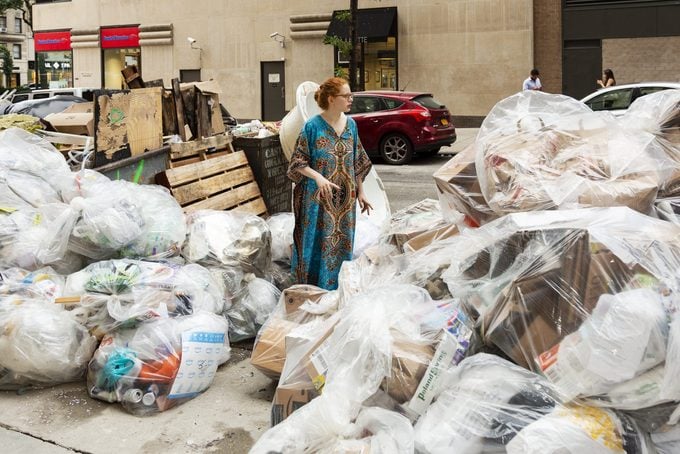
Sacks’s main focus is simply getting people to pay attention to how many unnecessary things they buy and then throw away. “Once you become conscious of the way you consume, you can see ways you improve,” she says.
Here are some of her suggestions for wasting less food and other goods.
- Compost your food scraps.
- Learn how to grow food sustainably at home.
- Repair items instead of buying new ones immediately.
- Store and reuse seasonal items.
- Purchase secondhand goods.
- Participate in swap or free groups in your area.
- Donate nice but unwanted items.
- Recycle. Just make sure you know how to recycle the right way. Too many people throw anything and everything into the recycle bin, which makes their whole bag unusable.
- Do your own trash walks!
Learning to trash walk
The concept is simple: Walk around your area and look in dumpsters or through garbage, then rescue usable items. Exercise and free stuff—what’s not to love? If you want to try it, Sacks offers these tips:
- Carry reusable tote bags or reusable grocery bags with you all the time. You never know when you’ll come across a treasure in someone else’s trash.
- Wear puncture-proof gloves when going through garbage.
- Don’t open locked containers or trash areas.
- If you open a bag, make sure it’s closed and secured when you’re done.
- Leave the area cleaner than you found it.
- Look for prepackaged foods, and steer clear of things that need refrigeration.
If you love trash walking but can’t spare the space in your home, do what Sacks does: Offer items to loved ones, donate them to free stores and shelters, or post items in local “freecycling” or trading social media groups to exchange with others. And if trash walking isn’t an activity you’d like to pursue, Sacks says to find a way to get involved that you feel passionate about. “We need to move away from the one-person hero narrative,” she says. “This is about every single person contributing in the way that only they can and in their unique way.”
Additional reporting by Mariah Thomas.
Why trust us
At Reader’s Digest, we’re committed to producing high-quality content by writers with expertise and experience in their field in consultation with relevant, qualified experts. We rely on reputable primary sources, including government and professional organizations and academic institutions as well as our writers’ personal experience where appropriate. This story focuses on recycling activist Anna Sacks, also known as The Trash Walker. We verify all facts and data, back them with credible sourcing, and revisit them over time to ensure they remain accurate and up to date. Read more about our team, our contributors and our editorial policies.
Source:
- Anna Sacks, recycling activist; phone interviews, May 2022 and April 22, 2024



















